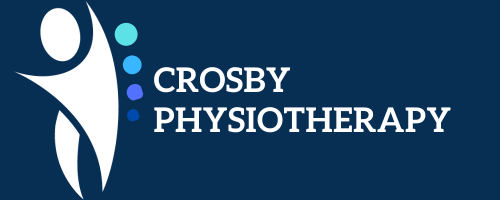Most elbow conditions seen at the clinic tend to be located at the lateral, medial and posterior aspects of the elbow.
Extensor Tendinopathy (Tennis Elbow)
With this very common condition, pain is experienced at the bony, lateral or outside aspect of the elbow, known as the lateral epicondyle. At this point, the tendon of the wrist extensor muscle (extensor carpi radialis brevis, ECRB) is attached, where there is also located a large number of nerve endings, which may explain why the condition is so painful.
Tennis elbow occurs in association with any activity involving repeated wrist extension movements against resistance. In sporting terms, tennis, squash and badminton can lead to the onset of this condition. In occupational terms, carpentry, bricklaying and computer-based work have been associated with the development of these symptoms. The peak incidence is between the ages 40 and 50 years, but this condition may affect any age group.
The most common clinical presentation is an insidious onset of pain, which occurs 24-72 hours after unaccustomed activity involving repeated wrist extensions. This occurs typically after a person has spent a lot of time either screwdriving, bricklaying, typing, or in sporting terms, playing tennis. This insidious onset is thought to correspond to microscopic tears within the tendon.
At examination, the maximal area of tenderness is usually just 1-2 cm below the lateral epicondyle at the ECRB tendon. There may also be areas of tightness and hypersensitivity along the muscle towards the forearm region. Typically, pain is reproduced by resisted wrist extension and commonly, resisted extension of the middle finger.
In terms of treatment, there is currently no single modality to be totally effective. However, a combination of different treatments will result in the resolution of the symptoms in nearly all cases. The aim of soft tissue treatment is to control pain, encourage healing, restore strength and function and correct any aggravating factors.
This is achieved by a combination of ice massage, electrotherapy modalities, soft tissue therapy, acupuncture, bracing, corticosteroid injection and eccentric strengthening exercises.
Flexor Tendinopathy (Golfer’s Elbow)
This condition is not as common as lateral elbow pain, but tends to exist with keen golfer’s. On examination, there is localised tenderness on the medial (inside) aspect of the elbow at the site of the tendinous origin of the forearm flexor muscles, with pain on resisted wrist flexion and forearm pronation.
Treatment is along the same lines as that of extensor tendinopathy, but due to its close proximity to the ulnar nerve, stretching of this nerve is indicated as it may become trapped within scar tissue.
Posterior Elbow Pain
This condition may present after a single episode of trauma or repeated trauma, such as falls onto a hard surface affecting the posterior aspect of the elbow. Whilst this trauma can occur during sport, particularly on a hard surface, it is also seen in individuals who rest their elbow on a hard surface for long periods of time and is known as “students elbow”.
The olecranon bursa is a subcutaneous bursa that may become filled with blood and inflammation causing a gross swelling and pain at its site at the point of the elbow.
Treatment consists initially of taking anti-inflammatory medication, rest and ice application and the fitting of a firm compression across the elbow. If this does not settle the symptoms, then aspiration of the inflammatory contents within the bursa and injection with a mixture of corticosteroid and local anaesthetic agents will usually be effective.
Triceps Tendinopathy
Tendinopathy at the insertion of the triceps muscle onto the olecranon (point of the elbow) is occasionally seen. Treatment strategies as outlined with extensor and flexor tendinopathy of the elbow are used, including, soft tissue therapy, electrotherapy and strengthening exercises.

